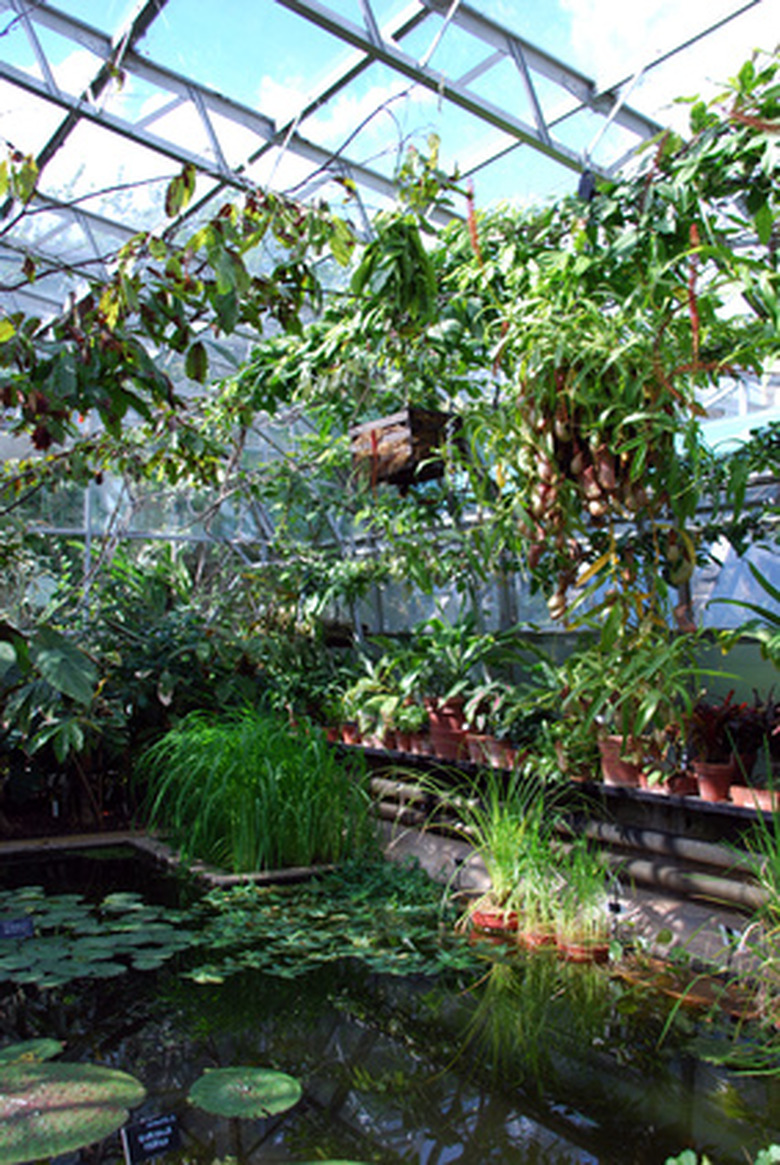DIY: Build Your Own Greenhouse From Sliding Glass Doors
A greenhouse can be built from recycled materials, including sliding glass doors removed from other buildings. It's easy to cover clear glass with tinting or frosting, if the greenhouse will hold too much sun. Sliding glass doors cover such large areas that it can be very handy to construct the greenhouse using these materials. The glass is very durable over time, and the pre-framed doors should provide a neat curbside appearance.
Design around Door Dimensions
To construct a greenhouse, decide how many doors you wish to purchase, or how many you have on hand. The doors' tracking at the top and bottom will need to be secured with screws into a solid wooden framework. Sketch the framework to accommodate two to four sets of doors on each side of the greenhouse, and at least one set across the back end and front side.
Create the Foundation
You can pour a perimeter of concrete that does not cover the interior floor of the greenhouse, but you will need to make such a concrete perimeter approximately 48 inches wide by 18 inches deep into the soil. You can fill the interior with wood chips, sand or small white pebbles to deflect the sun's heat. When you water the plants, you want the water to absorb back into the soil versus pooling up on a concrete base.
Use Heavy Lumber
Don't build the framework for the greenhouse out of small-scale boards. Instead, use 2-by-8-inch lumber boards or larger. The heaviness of the wood will help to hold the greenhouse down in strong winds or during storms. Secure the bottom perimeter with anchor bolts to a concrete foundation that is poured at least 6 inches deep. Install all floor perimeter boards flat, resting on their 8-inch sides. This will allow you to secure tracking much easier for the sliding glass doors. Floor perimeter boards standing on their 2-inch sides would be too cumbersome to install tracking.
Build a Lightweight Roof
Any greenhouse roof should be constructed of lightweight greenhouse glass, plastic panels or plastic sheeting. Actual glass can be a great risk, since greenhouses are vulnerable to wind and the elements. Semi-transparent or frosted plastic panels that can be easily replaced work well in most situations. Secure roof panels to the framework before placing sliding glass doors into tracks.
Shade the Sliding Doors
To protect plants from the sun, consider installing tinted sheeting on all of the sliding doors before you put them into place. All plants within a greenhouse can be severely damaged within a matter of a few hours if overheated. Keep the sliding doors operable in order to allow heat to escape during the daylight hours, so plants will remain at proper growing temperatures. Ventilating the greenhouse by opening the sliding doors will keep air circulating well so that a roof vent will not be required.
